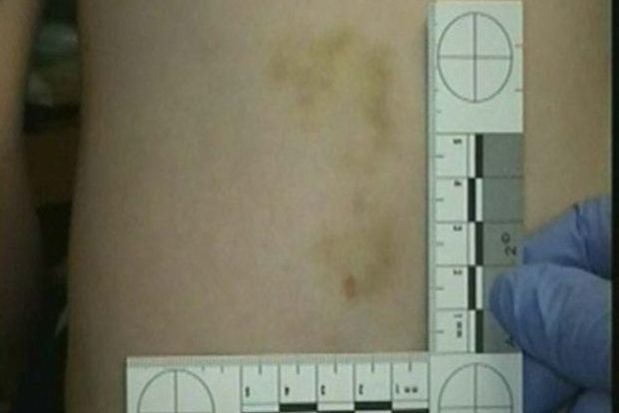Child abuse cases are emotionally driven for everyone involved. Expert review for both sides is imperative to ensure that the facts of the case are brought to light. The healthcare providers are emotionally connected to the patient and this may affect their ability to remain unbiased. A forensic expert can review of the discovery and provide outside and unbiased opinions with fewer emotional influences. Many medical conditions that cause bruises and fractures will be ruled out by the healthcare team but not all hospitals will do a complete evaluation if it seems the story matches the injuries.
Bone Fractures
There are several classifications of fractures that are considered highly suspicious of abuse because they occur in unusual places not related to normal play, or require high velocity to fracture:
- Metaphyseal lesions
- Posterior rib fractures
- Scapular fractures
- Fractures of the spinous process
- Spiral Fractures (humerus/femur)
- Sternal fractures
There are also increased concerns over multiple fractures, especially when they are of different ages or on both sides of the body.
Fractures can be dated to a certain extent but in terms of days or weeks not in terms of hours. Bone disorders such as Osteogenesis Imperfecta (Brittle bone), rickets and scurvy can all be evaluated in the hospital but are not always fully assessed.
Bruising
There are many reasons why children get bruises that are not related to abuse. Medical conditions that cause bruising include blood disorders, vitamin deficiencies, medication side effects and congenital diseases.
It is important to remember a few facts about bruising in children:
- Children who don’t walk or crawl are less likely to have bruises than a toddler or school aged child who is running and jumping in their play.
- Bruises cannot be dated by color, swelling or tenderness. Bruises can appear within minutes and may take 6 weeks to disappear.
- Patterned injuries may tell you what object caused the bruise, but not always:
In the images below, they are attempting to demonstrate a patterned injury from a punch. In my opinion, this is not definitive and a bruise such as the one depicted can be from many other sources.

(Arnold & Esernio-Jennsen, 2013)

(Arnold & Esernio-Jennsen, 2013)
Most patterned injuries provide clear delineation of the injuries, such as this one:

(Saccstry, n.d.)
Sometimes the pattern is obvious, sometimes it is not. An expert review is crucial when there is any question of source.
[sep]
Works Cited and image sources:
Alexander, R. (2010). Evidence-Based Approach to Blood and Bones. The 25th Annual San Diego International Conference on Child and Family Maltreatment. San Diego: Chadwick Center for Children and Families/Rady Children’s Hospital of San Diego.
Arnold, S., & Esernio-Jennsen, D. (2013). Telemedicine: Reducing Trauma in Evaluating Abuse. Rijeka: InTech. Retrieved from http://dx.doi.org/10.5772/55070
Saccstry. (n.d.). Saccstry, malformalady. Retrieved from tumblr: http://saccstry.tumblr.com/post/48587583198/malformalady-patterned-bruising-and-abrasions
Don’t miss our newsletter! Topics covered are:
- Assault / Trauma
- DUI / General Medical
- Child & Elder Abuse / Neglect
- Mental Health / Toxicology
Sign up here.











